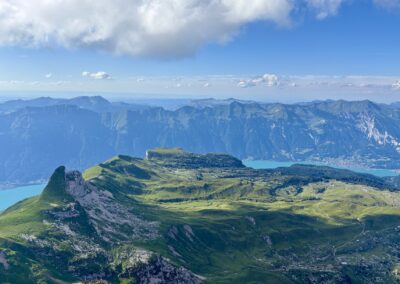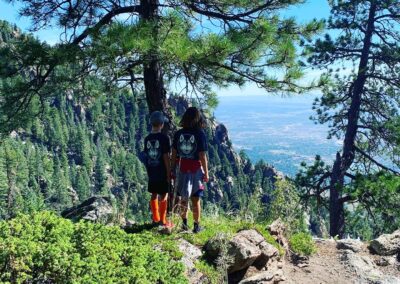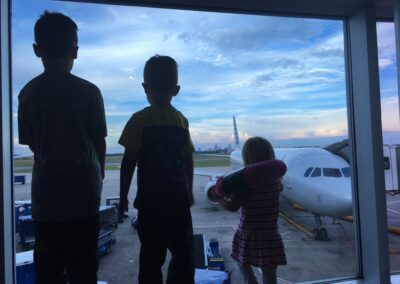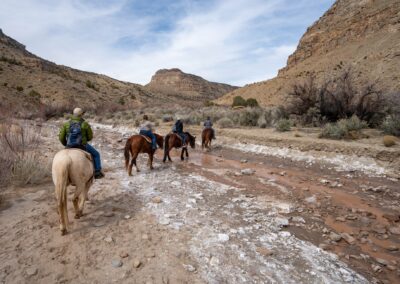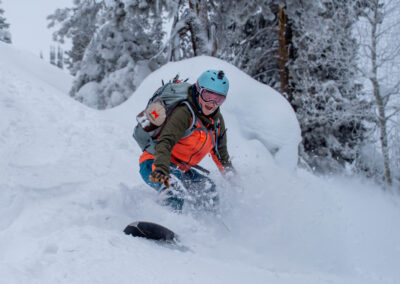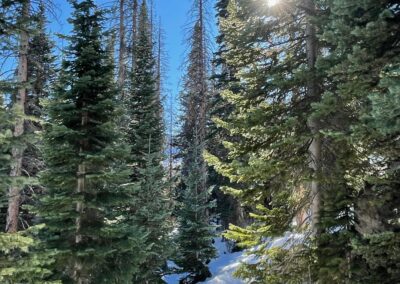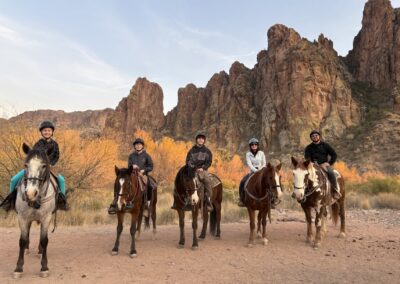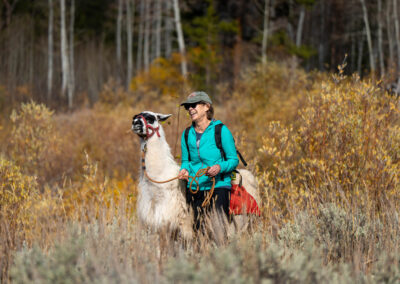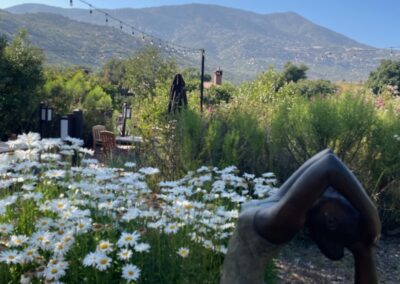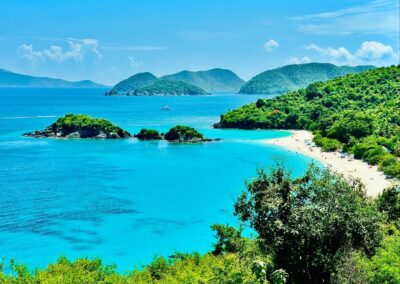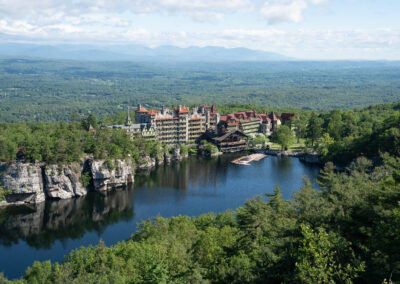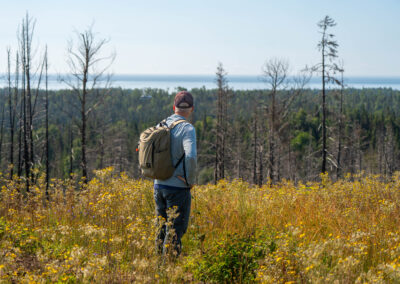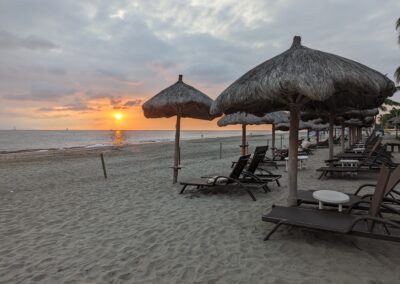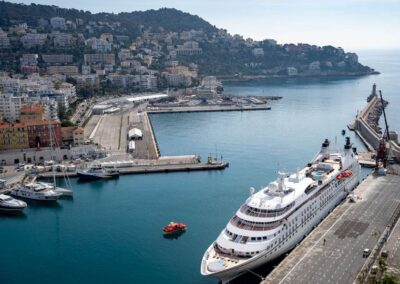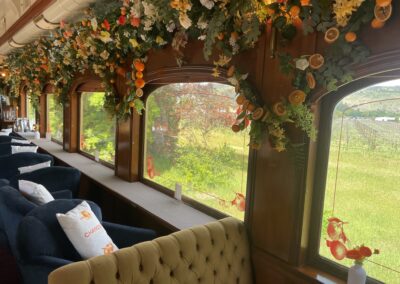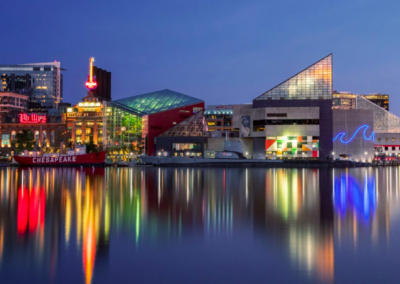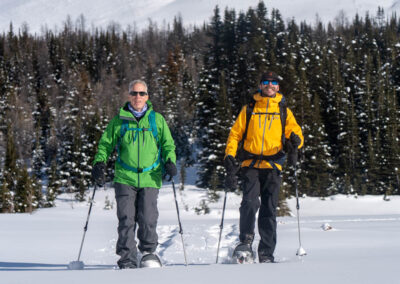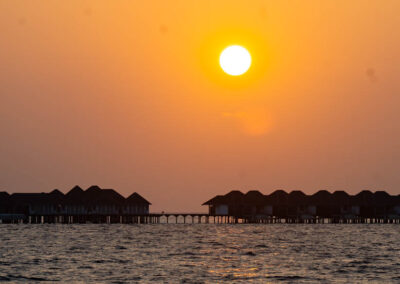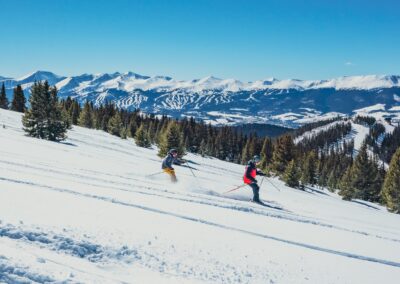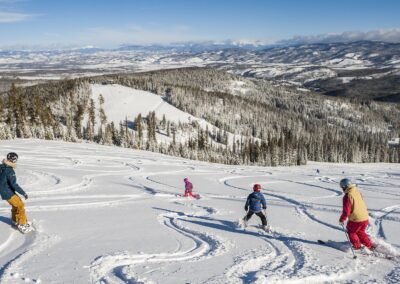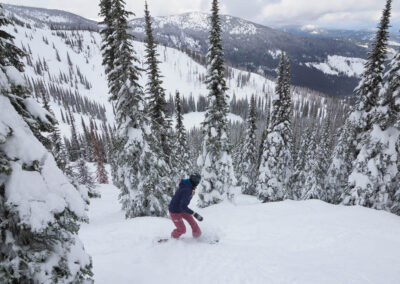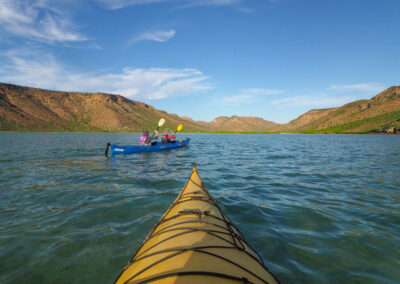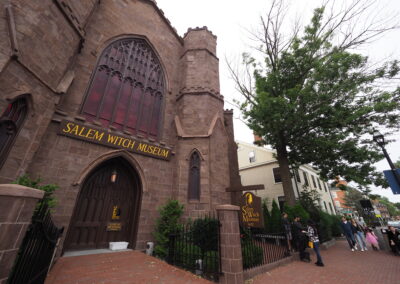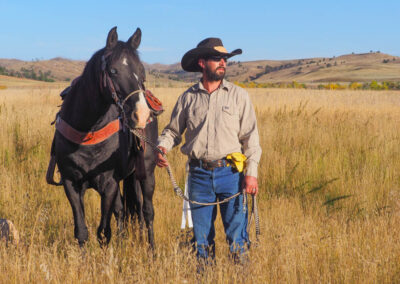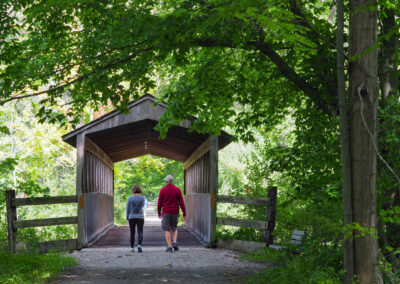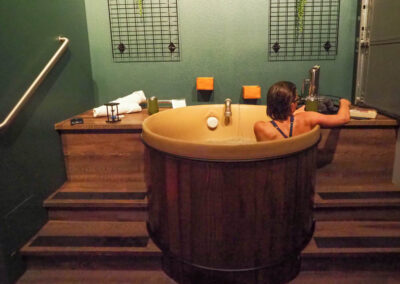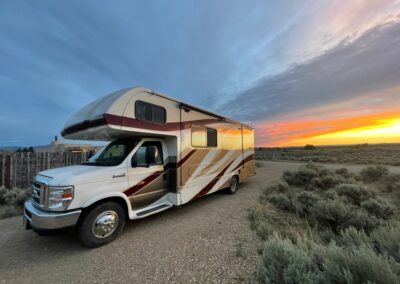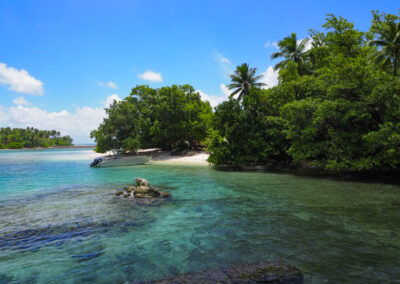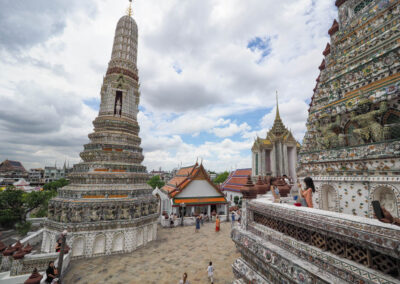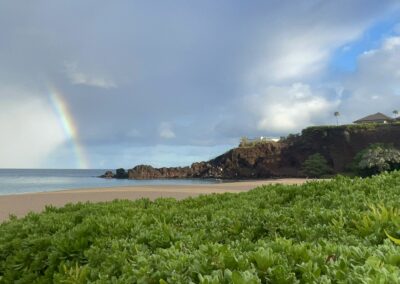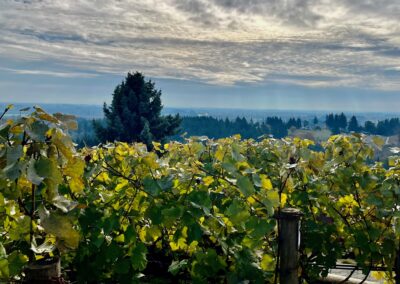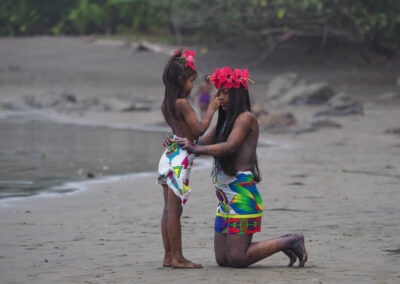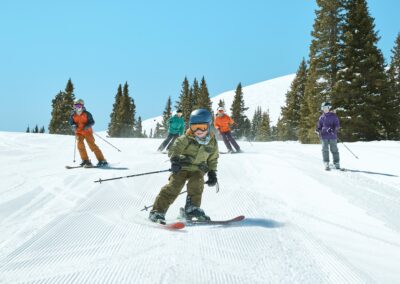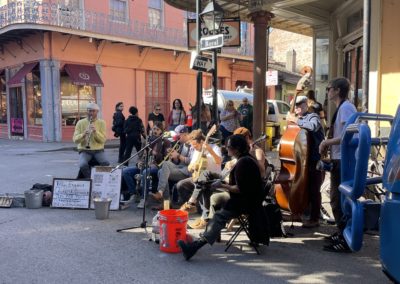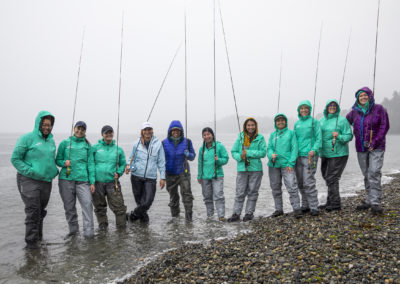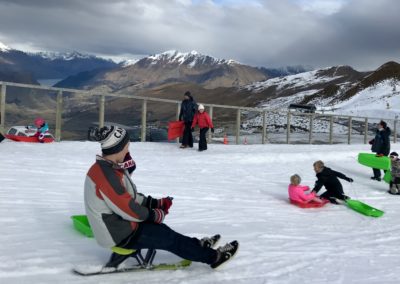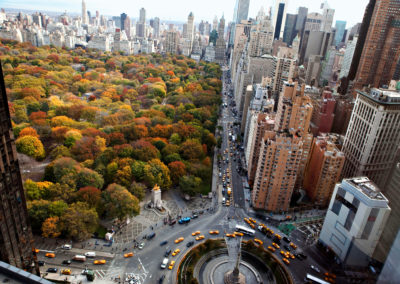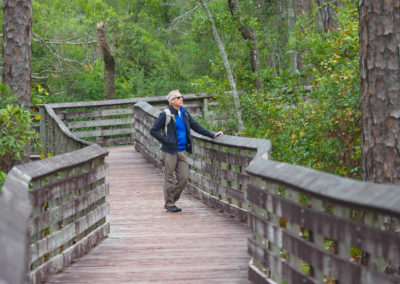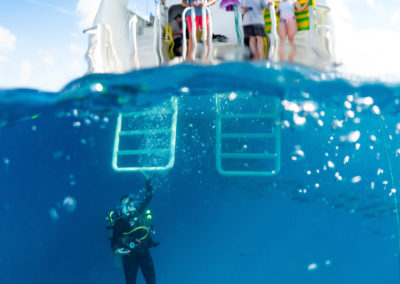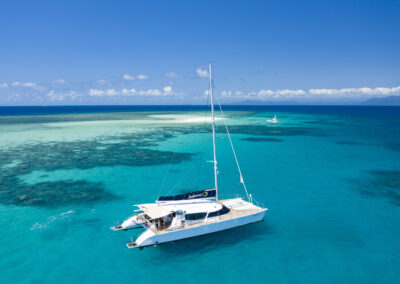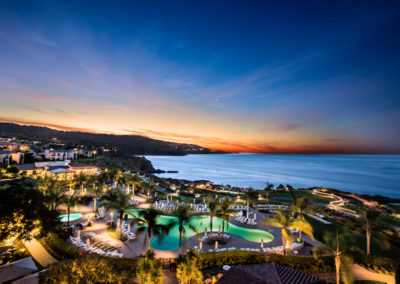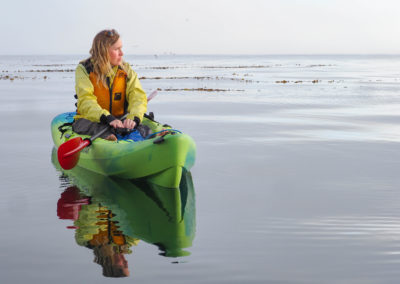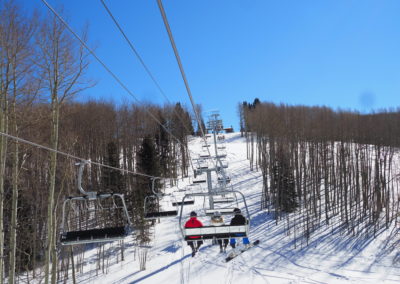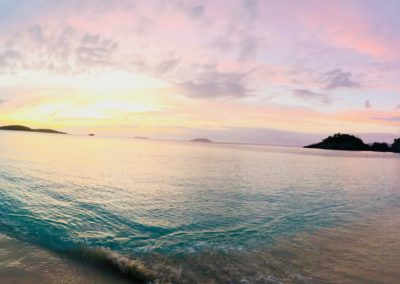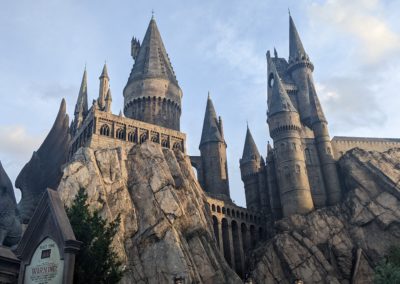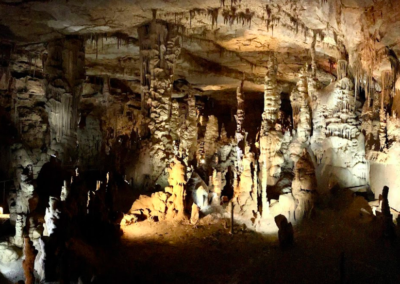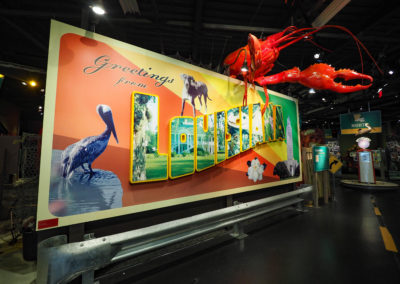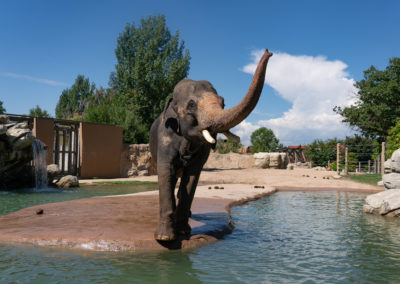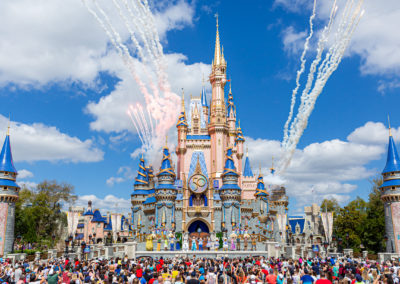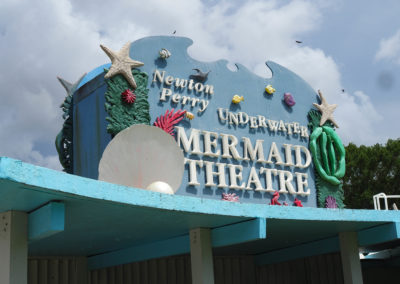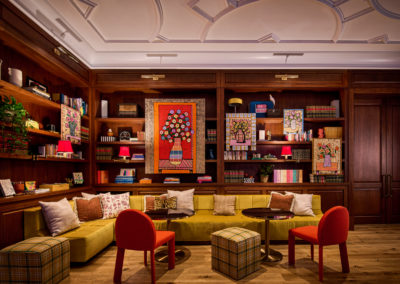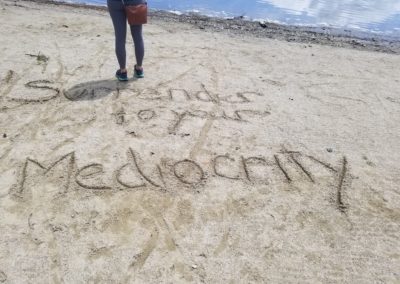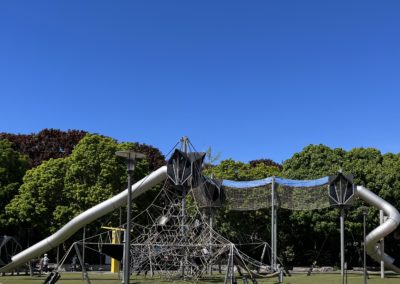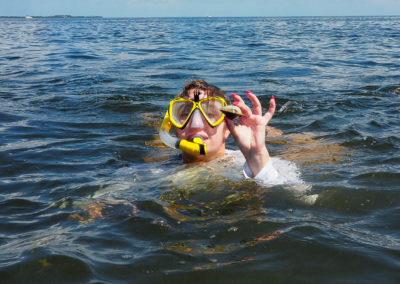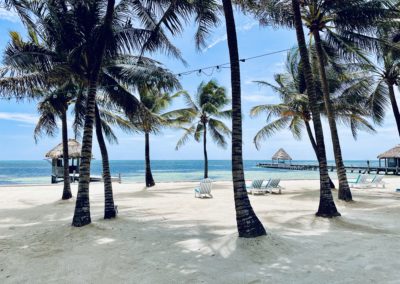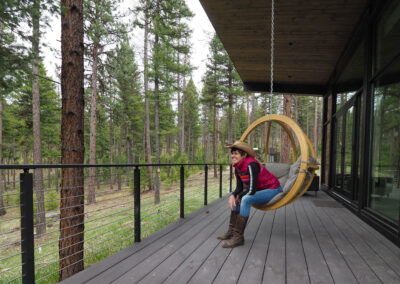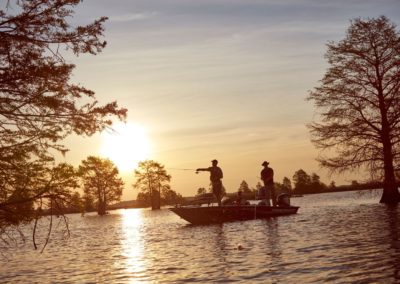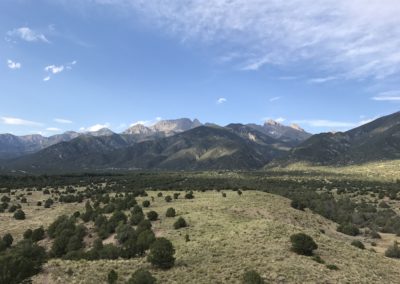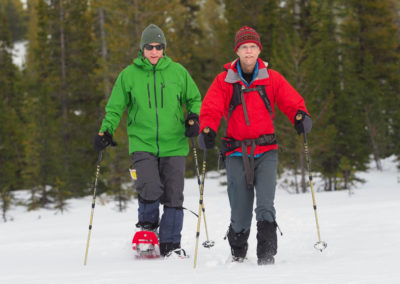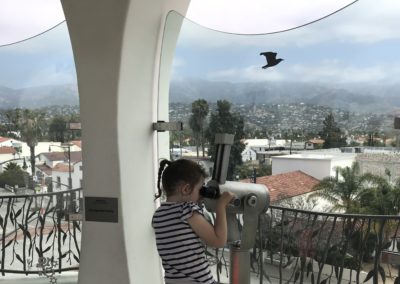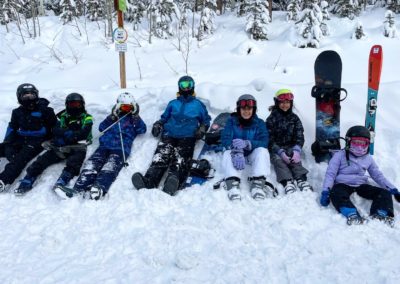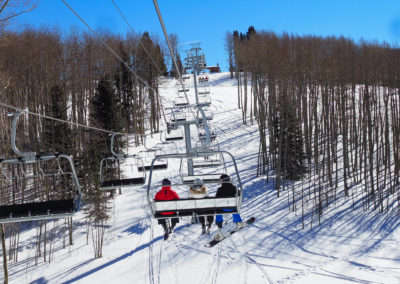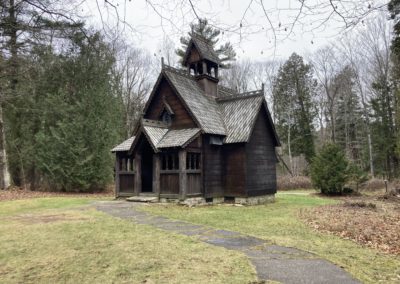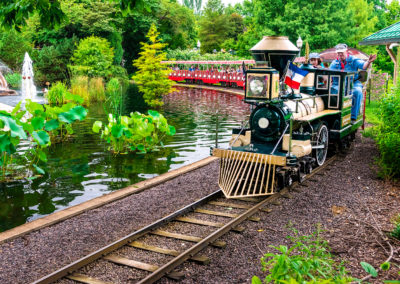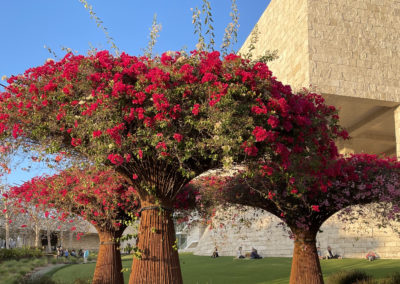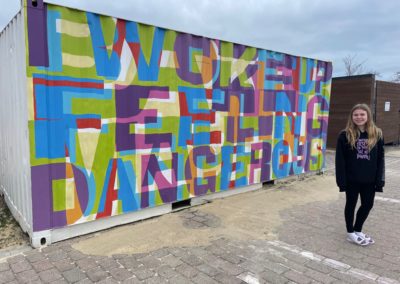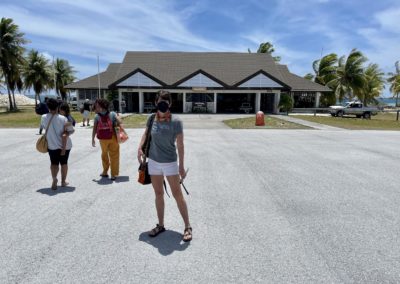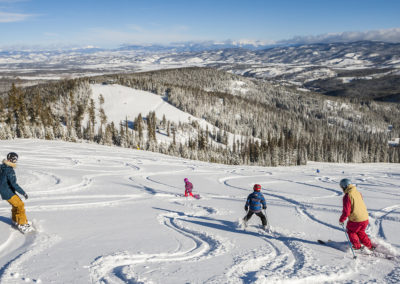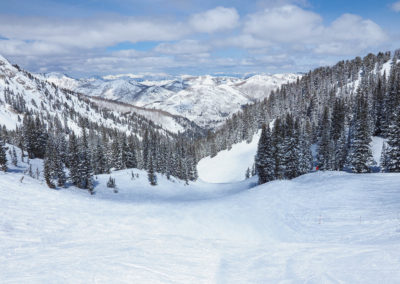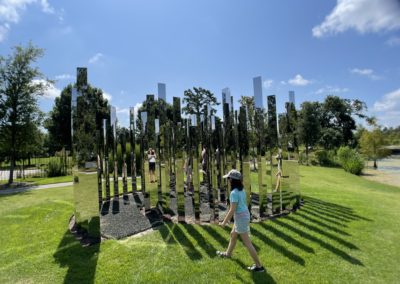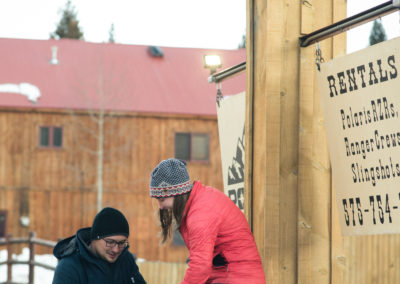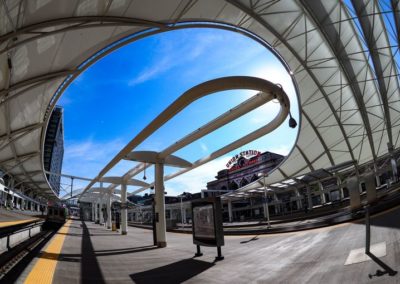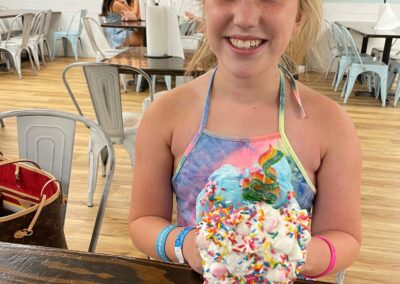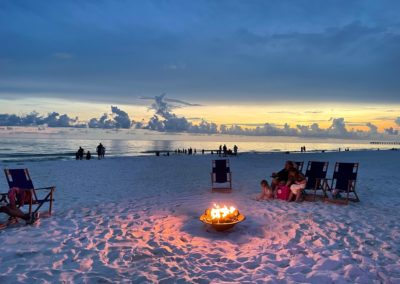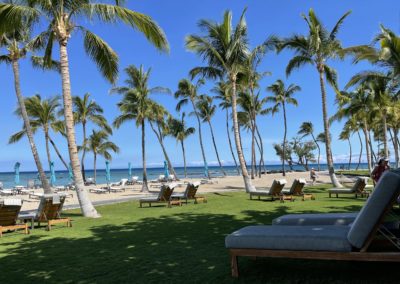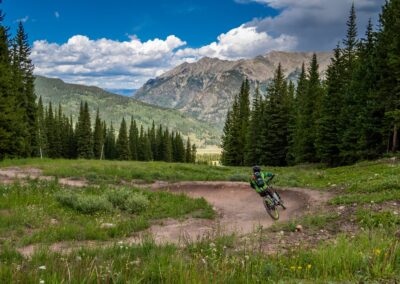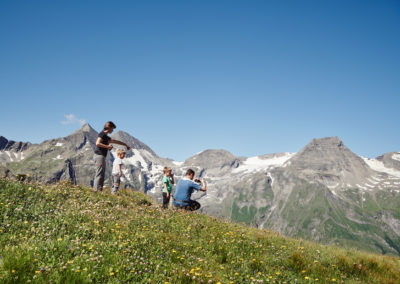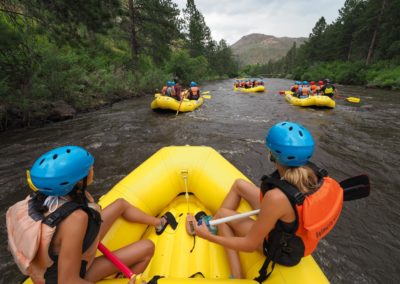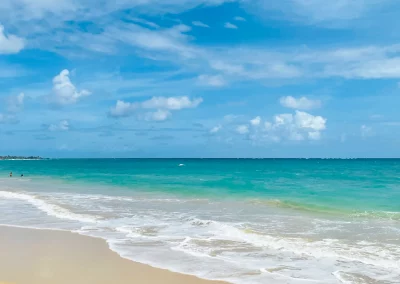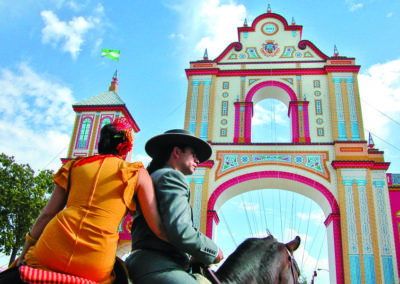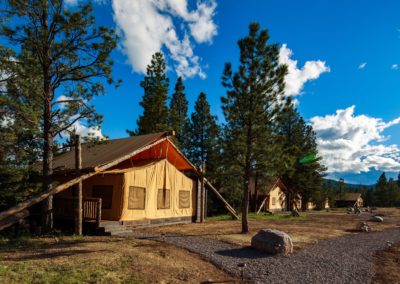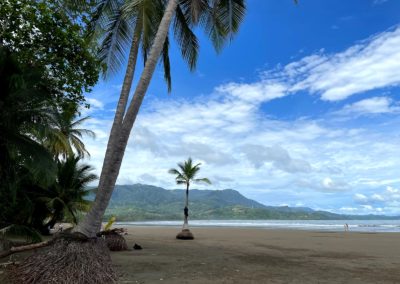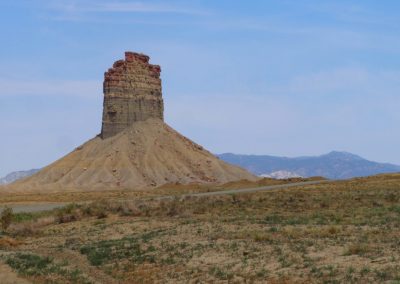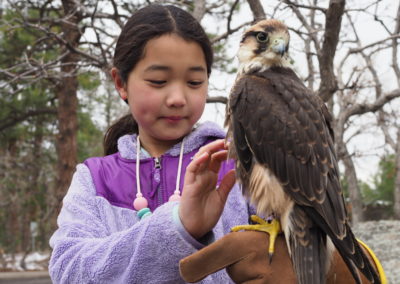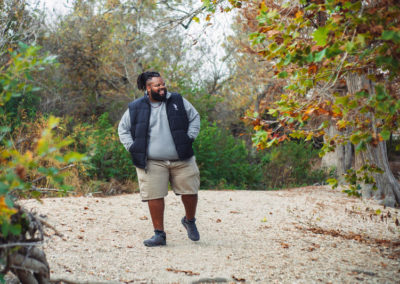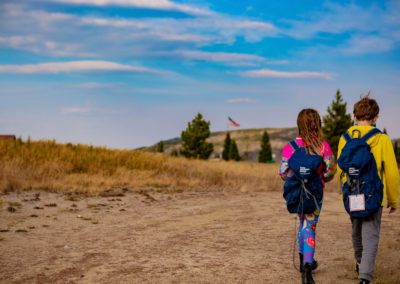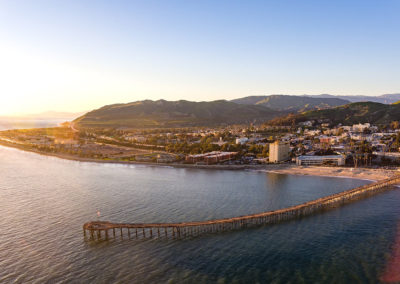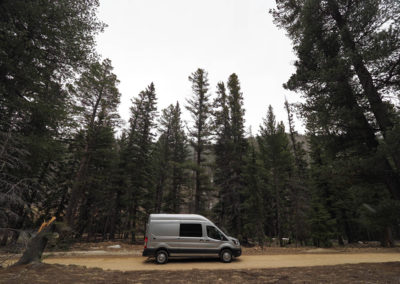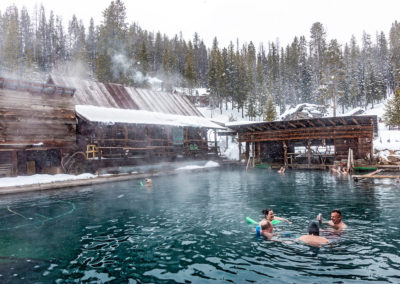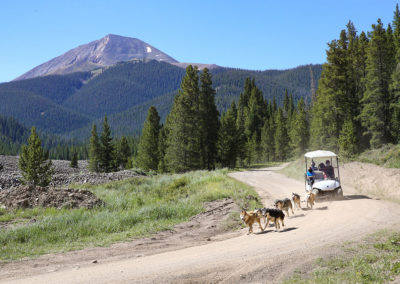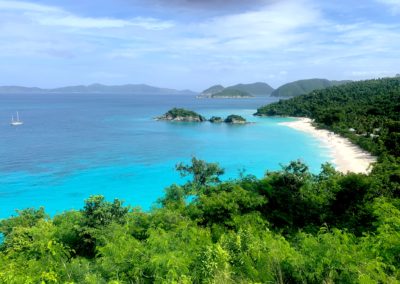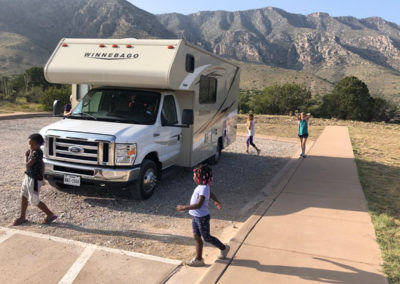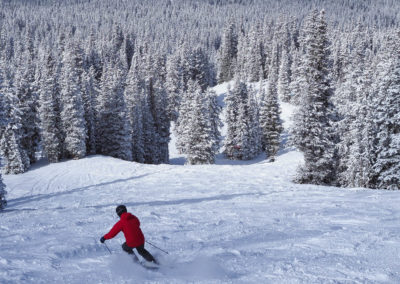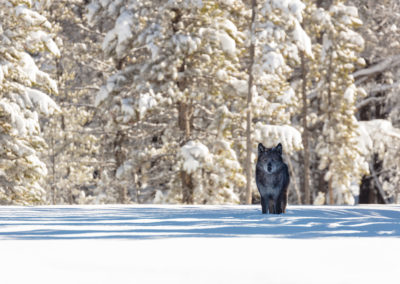“There are things we consume in this world that are incredibly special and, in the world of agriculture, it has little to do with people,” explains winemaker and Pinot Noir expert Ken Wright.
He cites, for example, Italy’s exquisite San Marzano tomatoes and the bamboo shoots he travels to Kyoto to enjoy each spring. “World class happens when a plant finds its perfect home, where all those inherent influences are exactly what that plant needs to perform at its highest level. It’s not about people, ever. In the end, it’s about plants and place. And we have a place where a plant has found its perfect home, and that is Pinot Noir.”
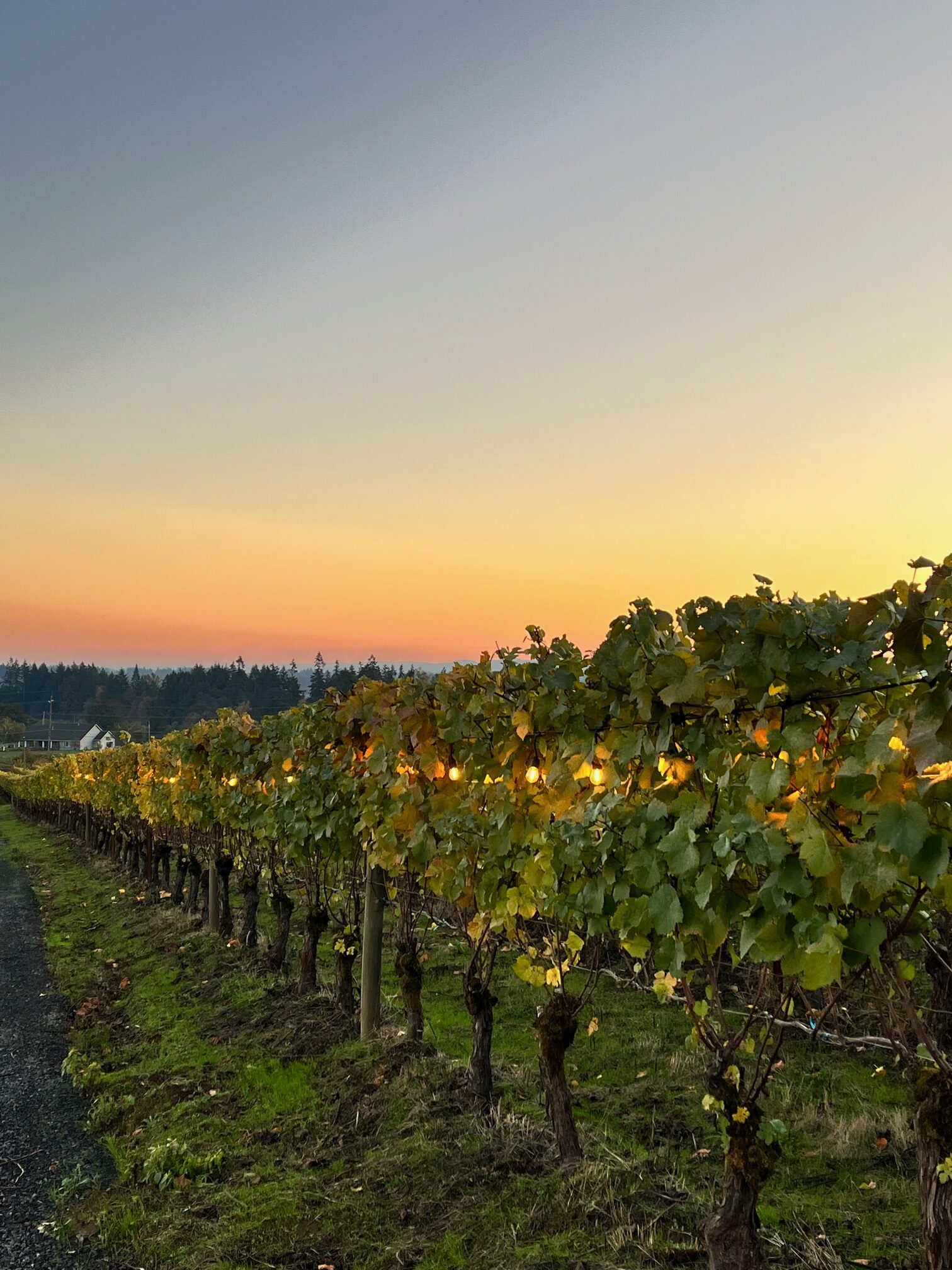
Pinot Noir is the grape that put Oregon wine on the map. Photo by Veronica Meewes
We are on the eastern edge of Willamette Valley’s horseshoe-shaped Yamhill Carlton AVA, looking out onto the Chehalem Mountains in the distance and a beautiful stretch of patchworked Ribbon Ridge AVA vineyards. WillaKenzie Estate is just to our north, Shea Wine Cellars is visible to the east, and Wright’s own tasting room is due south. This region has come a long way since David Lett of Eyrie Vineyards planted the first Pinot Noir vines in 1965. Now there are close to 1,000 bonded Willamette Valley winemakers growing over 100 different varieties of grapes, but Pinot Noir still reigns supreme, thanks to Oregon’s cool climate, which provides enough vine hang time for it to develop complex aromas and flavors.
“It’s supposed to be graceful and nuanced,” says Wright. “That’s what makes Pinot Noir the greatest grape in the world, by far. There’s nothing like it.”
A lover of both this region and this grape, I was delighted to experience a new Willamette Valley tour that just launched this year. Taste Vacations is known for hosting intimate food and beverage tours around the globe — from South African wine safaris to Belgian beer tours — and now a new Oregon wine tour has joined their offerings, with a focus on three subregions: Yamhill-Carlton, Ribbon Ridge and Dundee Hills. And there is perhaps no one better to kick off this deep dive into Pinot Noir than Wright, who’s been a champion for the grape since he found his way to the West Coast in the 1980’s and went on to help establish six Willamette Valley sub-appellations: Ribbon Ridge, Dundee Hills, Chehalem Mountains, McMinnville, Eola-Amity Hills and Yamhill-Carlton, which he fully authored.
RELATED: Playing in Portland, Austin’s Unofficial Sister City
Wright gave us a mini geology lesson out in the field, which felt especially powerful while we were quite literally immersed in the topography. He used quick sketches on an easeled pad to demonstrate how the collision of the Juan de Fuca Plate and the North American Plate 200 million years ago formed the region and continues to change the coastline. When the Juan de Fuca plate subducted under the northern West Coast, it brought with it ancient marine sediments that now form the parent material of the Yamhill-Carlton AVA. The second major geological event to affect the region was the Columbia River Basalt Flow, a massive flow of lava from an active volcano chain in eastern Oregon, which covered the valley floor 15 million years ago. As a result, the Dundee Hills and Eola-Amity Hills AVAs are made up of volcanic basalt as well as marine sedimentary.

Ken Wright gives a mini geology lesson out in the field. Photo by Veronica Meewes
Back at Ken Wright Cellars, we had the opportunity to compare Pinot Noir from different AVAs, as well as single vineyards. The grapes grown in volcanic soils yielded more fruit-driven wines (from red to blue fruits, depending on the region), while the grapes grown in marine sediment were much more nuanced and savory, with notes of flowers and spice. Wright’s tasting room is housed in the train depot built for the town of Carlton in 1921, which makes for a really special experience, and a great introduction to the quaint little town.
Just across the street, you’ll find tasting rooms for Big Table Farm and Flâneur Wines, and the latter is set in the historic Carlton Grain elevator. (Though these weren’t stops on this particular tour, I’d recommend visiting in your free time if you can.) Another one of our first stops was the iconic Elk Cove Vineyards, founded in 1974 by Pat and Joe Campbell which still remains a family operation, now primarily run by their kids, Anna and Adam. I loved the length and complexity of their single vineyard Pinot Noir, grown in iron-rich Jory soil, as much as their aromatic Alsatian whites like Pinot Blanc and a Gewürztraminer-Riesling ice wine.
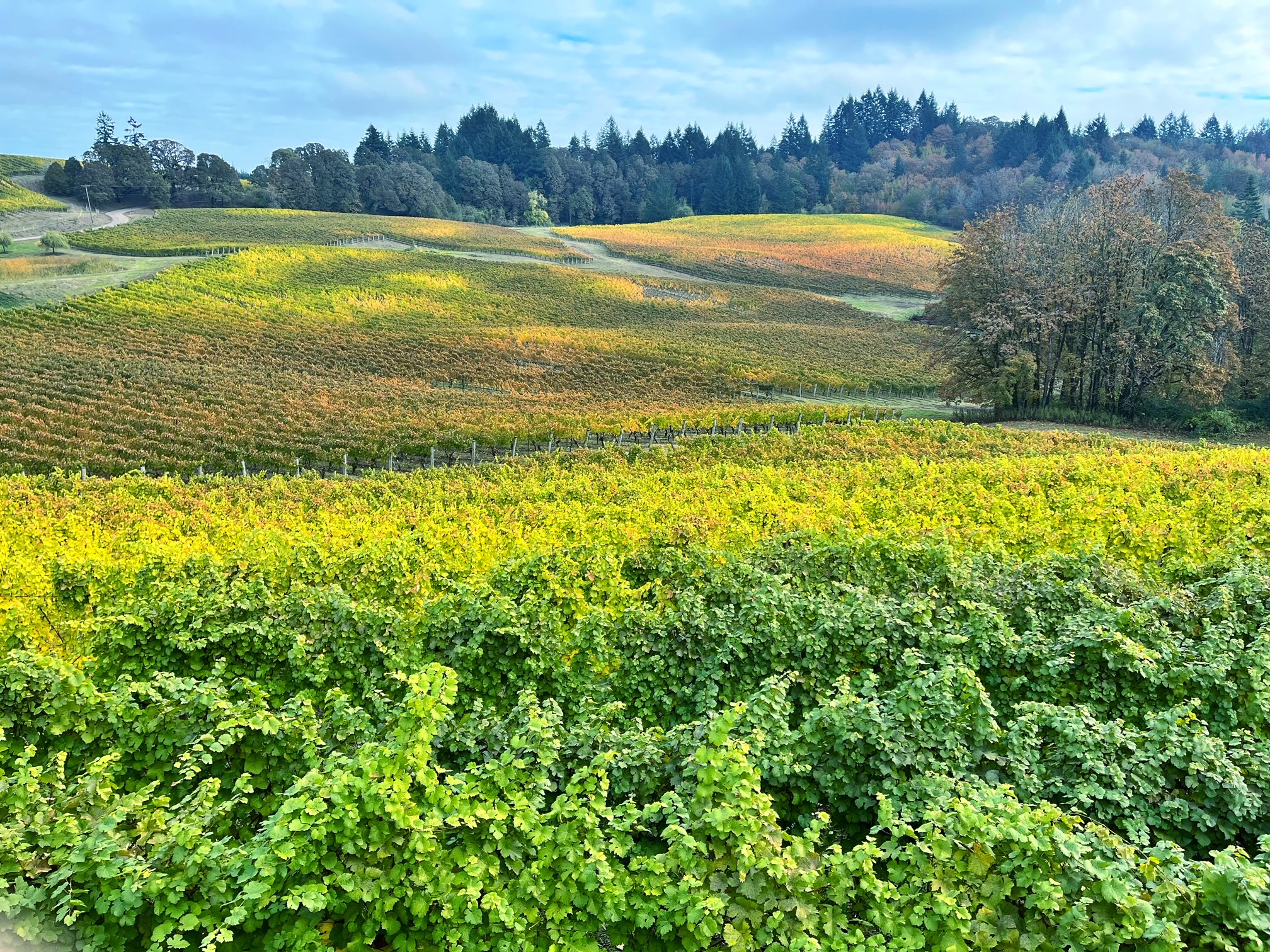
Family owned and operated, Elk Cove was the first vineyard and winery in what is now the Yamhill Carlton AVA. Photo by Veronica Meewes
While some of the wineries included on the itinerary are long-established, foundational operations, The Carlton Winemaker’s Studio provides an instrumental glance into a cooperative winery setting where sixteen Willamette vintners innovate under one roof. After touring the shared facility, we headed to the tasting room to enjoy an aromatic Grüner from Ridgecrest Vineyards, a tropical Sauvignon Blanc by Andrew Rich Wines and Isabelle Meunier’s first non-vineyard specific, yet no less expressive, LAVINEA Winery Eola Amity Hills Pinot Noir.
RELATED: Four Fredericksburg Wineries to Visit this Fall
Taste Vacations did a great job selecting fantastic places for us to eat along the way, and several of them were located in Carlton. The Horse Radish serves exceptional sandwiches, and I couldn’t resist getting the eponymous Horse Radish Dip, layered with house-roasted beef, horseradish cream, Mama Lil’s spicy peppers (a Pacific Northwest local favorite), pickled onions and provolone on ciabatta with au jus. Cuvée is a great spot for unpretentious French dining, and the chef/owner Gilbert Henry will circle around to see how you’re enjoying your clams marinière and boeuf Bourguignon. On another night we enjoyed an unforgettable dinner at Earth & Sea, a restaurant set inside a refurbished old fire station. My pan-seared halibut with vanilla cauliflower purée, roasted broccoli and tomato-tarragon beurre blanc was divine with some Oregon bubbles — a crisp 2012 Argyle Winery Brut, to be exact.
Taste Vacations’ Oregon itinerary will have you going to a manageable two or three wineries a day, in addition to meals and some other optional excursions (like a hike to a scenic viewpoint or a visit to a local olive oil producer), or your choice of free time for additional tastings or exploration. Best of all, you can imbibe freely without having to worry about getting yourself to the next location. An informative guide accompanies each small group the entire time, shuttling you from place to place in a sleek Sprinter van. Accommodations at The Dundee Hotel were perfect not only for its central location, but for its modern amenities, local artwork and the luxurious bed I looked forward to sinking into each night. There’s even some tasting rooms on-site, including the lauded Evening Land Vineyards, founded by chef-turned-winemaker Sashi Moorman and Master Sommelier Raj Parr.
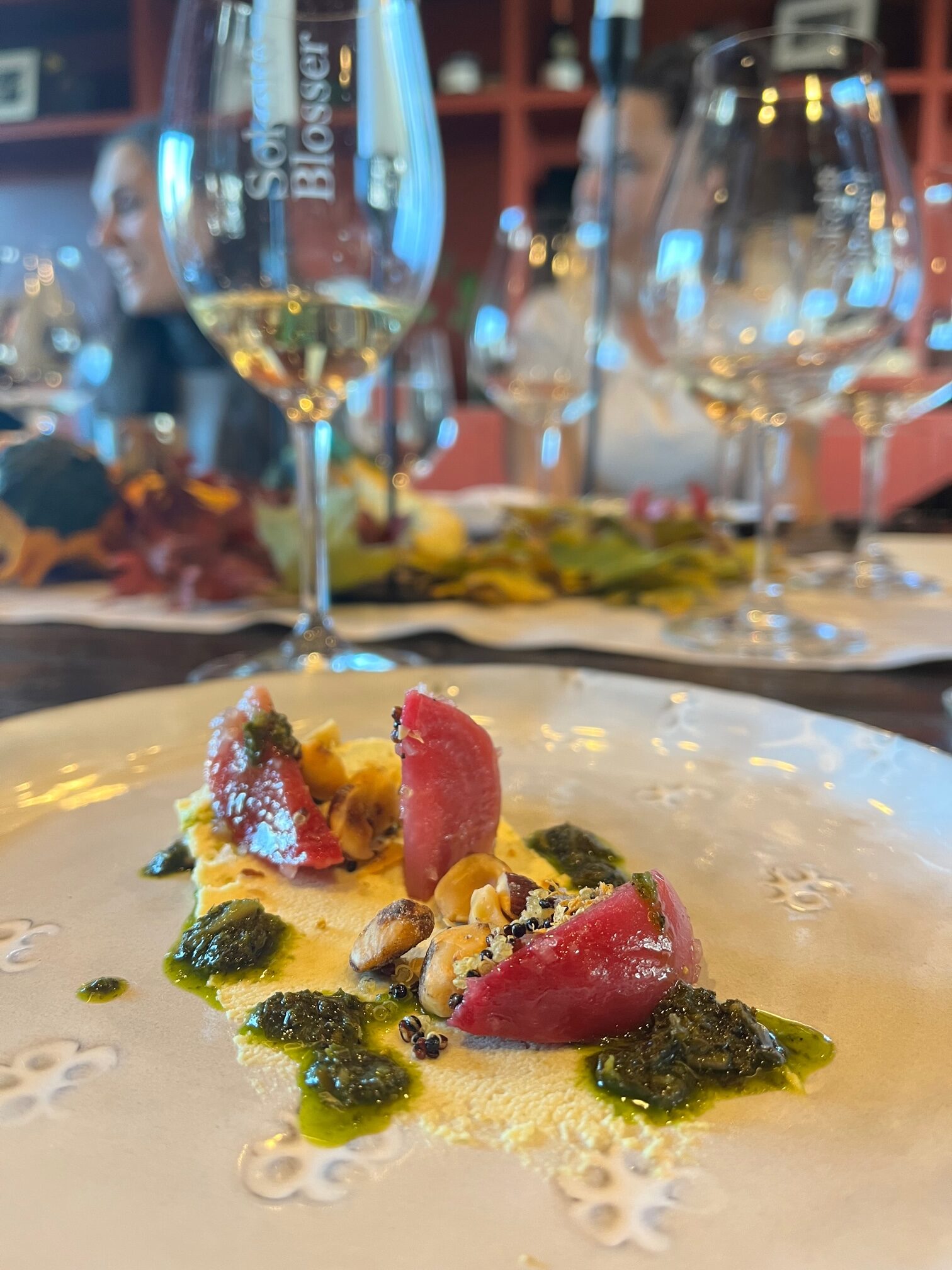
Beets, quinoa granola, hazelnut, Meyer lemon, almond “cheese,” and stinging nettle chimichurri paired with Sokol Blosser’s 2021 Estate Müller Thurgau. Photo by Veronica Meewes
Nearby, Sokol Blosser Winery is another founding producer of the region. Susan Sokol and Bill Blosser planted their first vines in 1971. Their incredible Farm & Forage experience is not to be missed: Chef Travis Bird crafts six courses using ingredients sourced locally, if not foraged right on site, and pairs them with their estate wines, which have been fine-tuned to perfection after over 50 years of winemaking. The certified organic, B Corp-certified winery was also one of the first to start using solar panels, the first to receive LEED certification, and continues to lead the industry in sustainability. Meanwhile, their neighbors at Domaine Willamette are the new kids on the block who are also innovating: this is Oregon’s first sparkling wine facility, producing biodynamic méthode traditionnelle sparkling wines with an underground aging cellar. The modern tasting room is filled with amazing artwork, boasts an elegant pairing menu, and the outdoor patio offers stunning sunset views.
The tour goes as far north as Ribbon Ridge, where we visited the beautiful family-run Eminent Domaine and compared Pinot Noir grown from various Swiss and Burgundian clones. Artist James Frey founded Trisaetum Winery, where he crafts single vineyard Riesling without the use of tilling or any herbicides, and his fresh-out-of-college daughter, Tatum, leads the distillery program, finishing many of the spirits in Cabernet and Riesling barrels.

Family-run Eminent Domaine is a vineyard and tasting room located in the Ribbon Ridge AVA focused on Pinot Noir and Chardonnay. Photo by Veronica Meewes
McMinnville is another charming town you’ll get to explore, and it has a few more attractions than Carlton, from a cute book store (Third Street Books) to an old fashioned ice cream parlor (Serendipity) to the McMinnville Antiques Mall. HiFi Wine Bar is a dream for both audiophiles and oenophiles, serving world class wines in a beautifully designed plant- and art-filled space with a top-notch hi-fi vinyl sound system. Owner Evan Martin shared a tasting with our group which showcased his own Martin Woods Winery selections alongside various Old-World wines that inspired each one. When in McMinnville, dinner at Nick’s Cafe is an absolute must. Opened in 1977, it quickly became a neighborhood institution and a popular hangout for Willamette’s wine community. I didn’t think twice about choosing the signature crab lasagna with local mushrooms, toasted pine nuts, roasted garlic and lemon bechamel. It was creamy, crabby heaven, balanced by a bright, textured 2019 Hazelfern Chardonnay.
Founder Nick Peirano’s daughter now runs operations, but he can often be found hanging out, like he was on the night my group visited. He stopped by our table at dinner to chat about the early days of Nick’s Cafe.
“When I first opened I had all the local wineries on my list,” he remembers. “I had no idea how much that meant to them but in recent years they’ve been telling me. I used to know all the spouses’ names, and all the dogs’ names, but now there’s 700-something wineries so I can’t keep up!”
If You Go

Getting there:
Taste Vacations tours include double-occupancy lodging, most meals, local transportation, organized culinary and wine experiences and the services of a guide, but you must purchase your own airfare. Portland International Airport is the closest hub to the Willamette Valley and Taste Vacations will provide a shuttle for you from the airport to your wine country hotel. While many airlines fly to PDX, I’d recommend booking with Alaska Airlines –– “wine flies for free” so you can check a case of wine on your flight home for no additional cost.

Stay:
Accommodations for the trip, which are booked through Taste Vacations, may change according to seasonal availability, but there are a number of excellent options throughout Willamette Valley. If you decide to extend your stay for some independent exploration, I recommend booking at the luxurious The Allison Inn & Spa in Newburg for a peaceful getaway. For a more affordable option with a kitschy vibe, there’s a McMenamin’s Hotel Oregon in McMinnville. And for a truly exceptional boutique hotel in a historic building, book a room at the Tributary Hotel, also in McMinnville.
Do:
One of the best ways to mitigate all the eating and drinking you’ll be doing on this trip is by getting outside for some exercise against Oregon’s jaw-dropping backdrop of firs, ferns, mountains and waterfalls. The Trappist Abbey Guadalupe trail is a 3.9-mile loop in Lafayette, Oregon, owned by Trappist monks. It’s open to the public and, once you reach the abbey itself, you’ll also encounter their book bindery, fruitcake bakery and a small bakery. If you spend time in Portland at the start or end of your trip, there are plenty of places to forest bathe. With over 80 miles of trails, Forest Park is one of the largest urban forests in the United States, and Hoyt Arboretum provides 12 miles of peaceful trails while you soak in the living library of over 2,000 species of trees.
Eat and Drink:
If you do extend your stay, there are plenty of stand-out culinary options to enjoy too. Experience the progressive tasting menu at ōkta, which has been getting global attention, created by Chef Matthew Lightner using ingredients from the restaurant’s nearby farm. The Painted Lady serves French-inspired Pacific Northwest fare in a beautiful Victorian house and also boasts one of the area’s best local wine libraries. The Carlton Bakery is a perfect place for a pick-me-up of coffee and French pastries while you’re out tasting, and the Helvetia Tavern is a historic Hillsboro pub known for its burgers and fries.

Pro tip:
Always pack waterproof shoes and some seasonally appropriate rain gear when headed to the Pacific Northwest.








